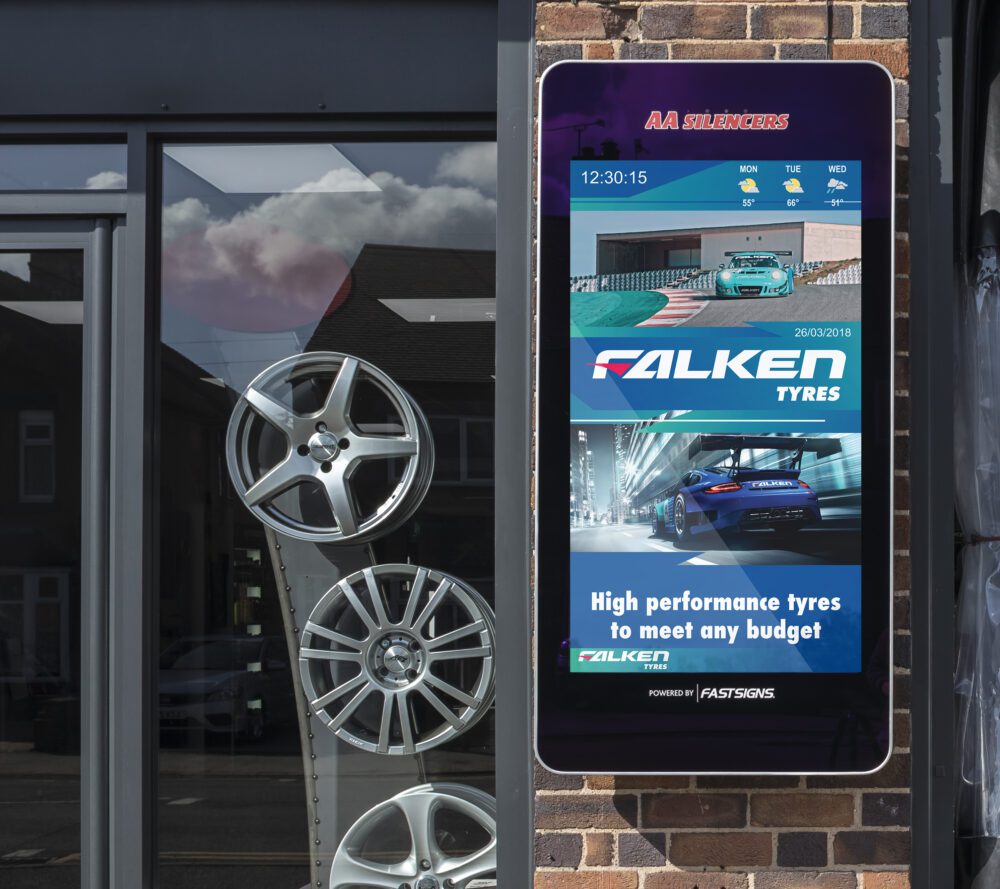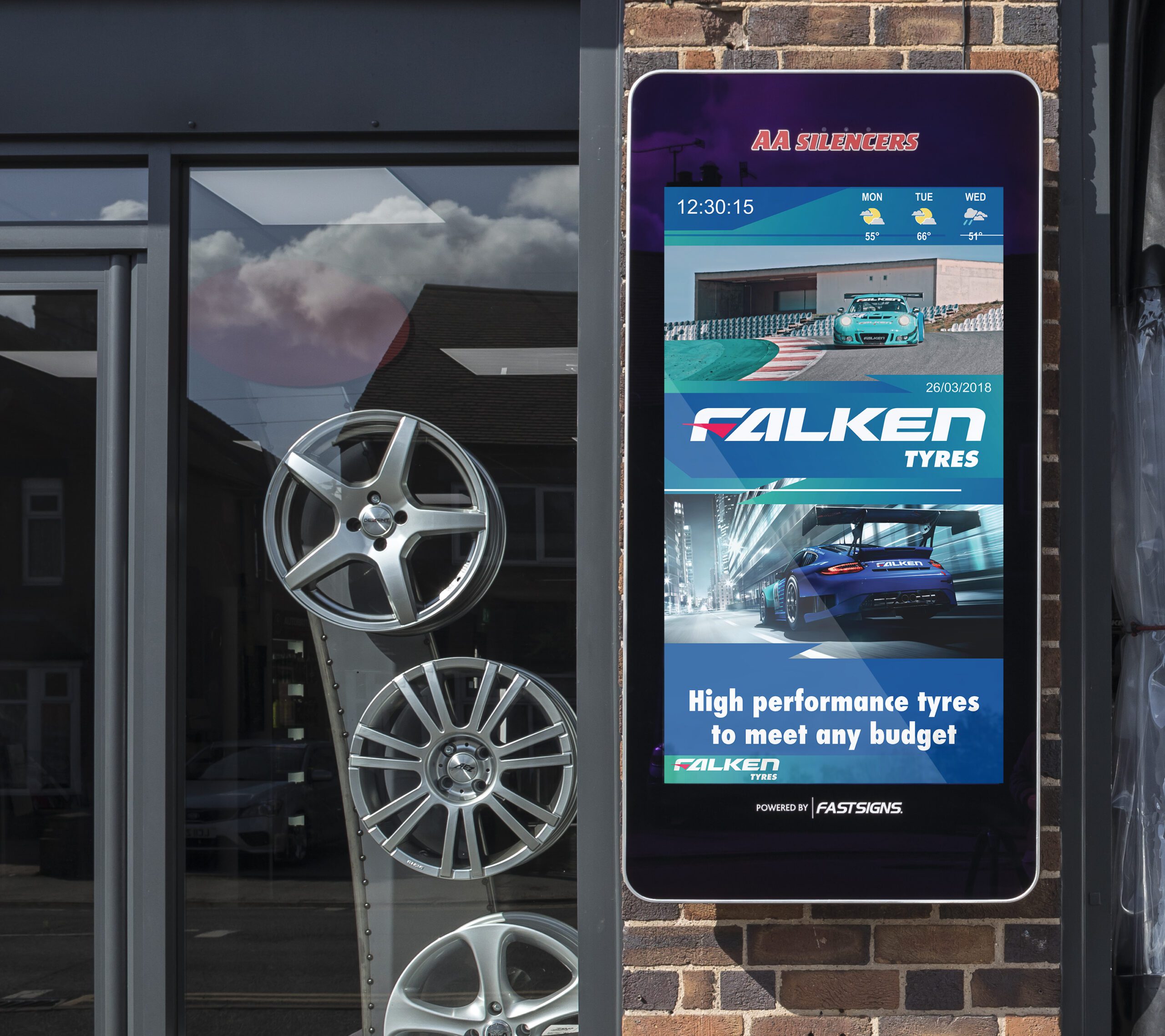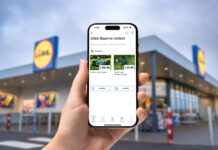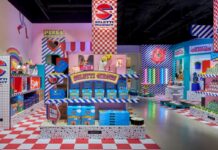Digital signage is fast becoming one of the most sought-after visual communications technologies in the market. While not limited to retail, its impact on the sector is significant with more than 40 percent of shoppers revealing that digital displays can change what they buy, according to research from ScreenCloud.
While we may no longer face the same challenges as we did during the height of Covid-19, digital signage’s purpose, versatility and sustainable nature has never been more crucial to businesses of today. And with so much hinging on catching the eye of the new post-pandemic consumer, investing in and introducing digital solutions to your retail venture could be the difference between survival and collapse.

So what does the near future hold for the sector, and how can digital signage specialists best keep a handle on where customers need help to attract and serve the public?
Digital signage is more important than ever
Businesses in the retail sector, in particular, see some of the most regular changes to the information they provide to their customers — from frequent menu updates, to displaying product offers. High-tech signage allows them to update their information as often as required, while not being restricted by fewer staff numbers and, importantly, having no impact on waste that would be produced if using physical signage.
Crucially, it also works to capture attention and impart information more quickly and more memorably – and with 8 out of 10 customers reporting that they had entered a store because of a digital sign catching their interest, it’s rapidly becoming more vital to every retailer’s portfolio. And with the ‘struggle’ between bricks and mortar and e-commerce retailers still very much at play, business owners should be prepared to shift their mindset.
What’s next for digital signage?
As with all types of technology, it’s natural to wonder where it will head next, and to what extent. One direction that shows glimmers of potential is with holographic imagery — or, rather, the effect of it.
Holograms have been a favourite of science fiction for decades, but systems do exist that produce the effect of it, using a spinning fan with LEDs set into the blades. When the fan spins quickly, a moving 3D image can be produced, with the background still visible behind. It’s this three-dimensional translucent effect that makes the images particularly eye-catching and alluring, and the different-sized units can be positioned both indoors and outdoors. Of course, the technology is still in its infancy, but the steps towards its gradual refinement are already happening.
LEDs themselves are also constantly improving, with the development of direct view and fine pitch LED TVs producing more intricate and brighter images. This is already being used on a large-scale for screens at shopping centres, for example.
At present, British luxury fashion brand, Burberry, is investing heavily in digital signage. Its flagship store in London, for example, is playing host to some of the most innovative solutions on the market.
Visitors to its Regent Street store are greeted with mirrors that double as video digital signage displays, and radio-frequency identification-enabled (RFID) screens automatically trigger related catwalk footage when products are taken into a fitting room, or near a screen.
Fragrance and lifestyle house, Jo Malone, has looked for ways it could harness digital signage to create an engaging experience for customers picking out fragrances, as well as personalising their visit in-store. To fulfil its ambition, Jo Malone’s team used visual language to explain each scent.
Customers could simply pick up a bottle of perfume from the shelf to see an elegant representation of the fragrance on a screen. To personalise the journey, the digital solution even went as far as conjuring up complementary aromas depending on the chosen scent, creating a customised vial for the shopper.
It’s clear that the modern consumer no longer buys products; instead, they buy into experiences.
With some of the biggest brands adopting this approach, along with our teams across the FASTSIGNS UK network, I believe integration of technologies will play a fundamental role in the digital signage solutions of the future.

Immersion, AR and the metaverse
With more intricate screens, it’s possible to create a far more captivating experience. This leads to inevitable thoughts of augmented reality, or AR, and digital signage’s role within it.
Although it will undoubtedly have a significant role to play, it’s easy to get a little too excited. The metaverse, as a singular entity, doesn’t yet exist and AR experiences are disparate and fragmented.
From my knowledge of the technology available, it’s clear that there is only currently the capacity to have isolated systems. In other words, the experiences are highly-immersive, intense and enjoyable, but they are restricted to the specific apps or programs in which they operate.
The ethos of AR or the metaverse is the open interaction between users from different systems and sources, which doesn’t yet exist. Video game series, Minecraft, and social media giant Meta may be the two most active brands in envisaging it at the moment, but its development won’t be monolithic. Instead, it will be from several creative technology businesses operating closely to integrate with each other’s work.
The ecommerce opportunities the metaverse will bring are incredible, but it’s still probably 10 years away. It’s definitely an important space to watch, as digital signage could serve a crucial role as a bridge from the real world into the metaverse. We’ve already seen brands literally inserting customers into their signage solutions, so what’s to stop these retailers taking it one step further?
How to stay ahead of the curve
Our customers, as all digital signage professionals will understand, are one of the main driving forces behind our innovations.
For example, a business recently challenged us to create a system that displays a dashboard of information, which is updated automatically based on information from several departments, without human input. This means bridging several software platforms together that haven’t been integrated before. Happily, even though it tested our capabilities, the system was a success.
This ability to integrate new technology from several providers is crucial in digital signage, and even more so in retail with integration between signage solutions and retail experiences rapidly increasing.
This means we can try out technology and find out as much about it as we can, to see if it’s right for what we do. Even if it doesn’t, we can share that experience to others in the sector, who may find it useful, or we can keep a record of it in our files in case we come across a franchisee that has a customer looking for something unique.

















